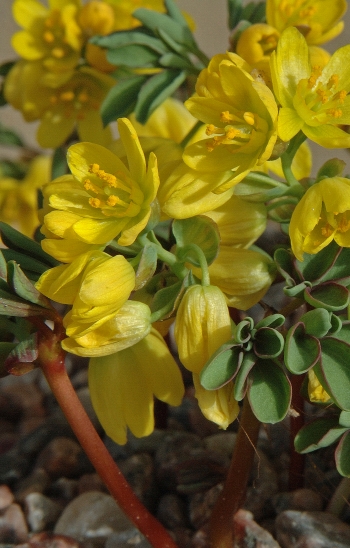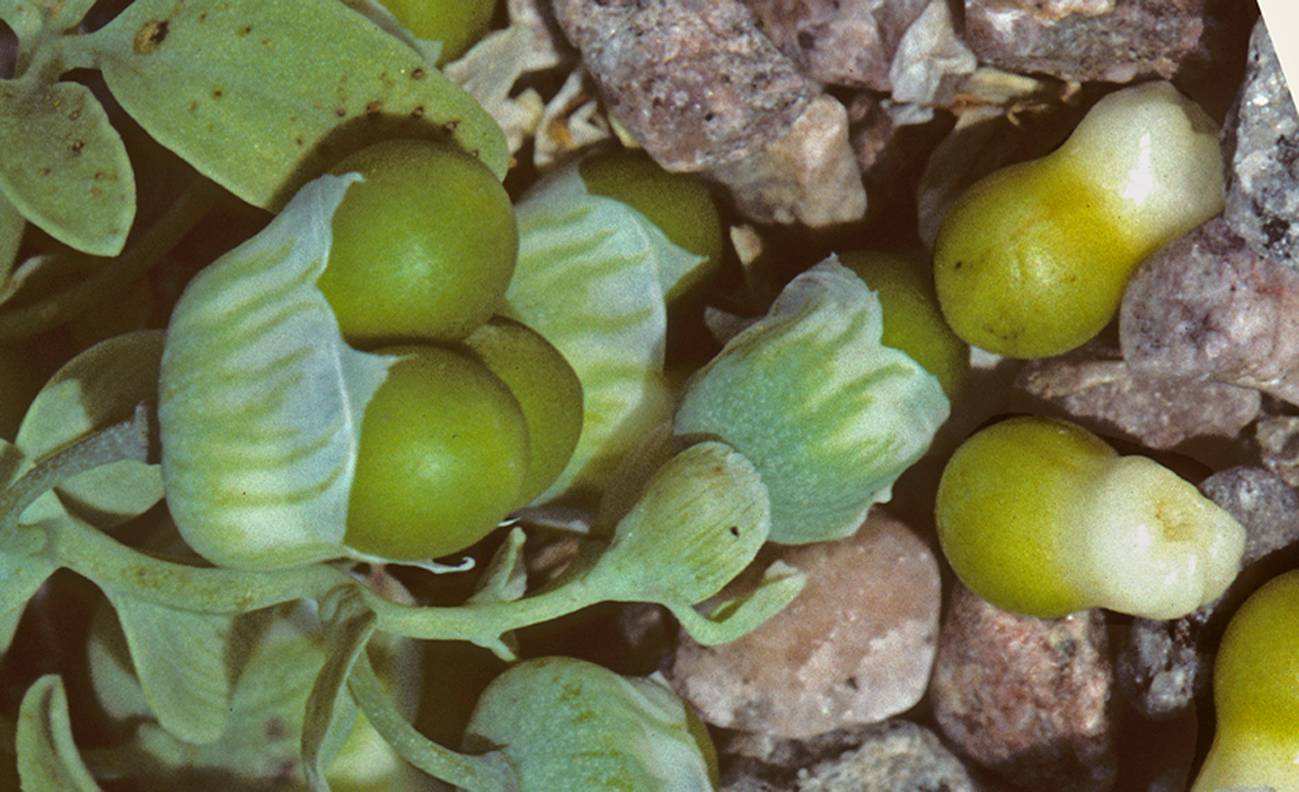Gymnospermium peloponnesiacum (Phitos) Strid
Synonymy

Taxon info
Gymnospermium peloponnesiacum is somewhat similar to Bongardia and Leontice, but a much smaller plant growing in natural habitats in the mountains. It was first discovered by Halácsy (author of Conspectus Florae Graecae) on Mt Panachaiko in 1893 and has subsequently been found also on a few other mountains in Peloponnisos, notably Klokos. The generic name alludes the fact that the seeds are “naked” as the thin pericarp ruptures before maturity. The lower part of the seed is somewhat fleshy, probably an adaptation for ant dispersal.A
A. Dimopoulos, P., Raus, Th., Bergmeier, E., Constantinidis, Th., Iatrou, G., Kokkini, S., Strid, A. & Tzanoudakis, D. 2013: Vascular plants of Greece: An annotated checklist. 31: p. 326 [Plate 5.6]






